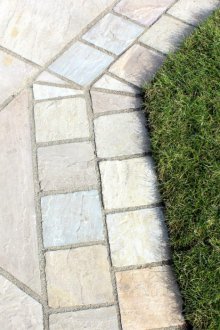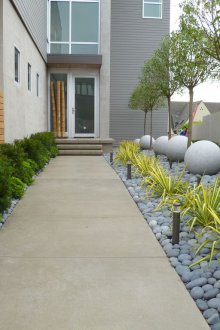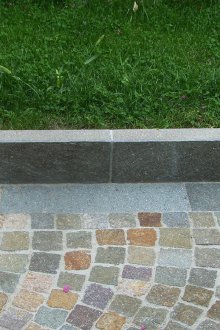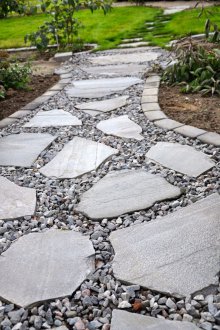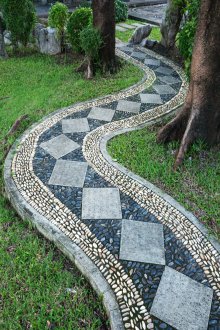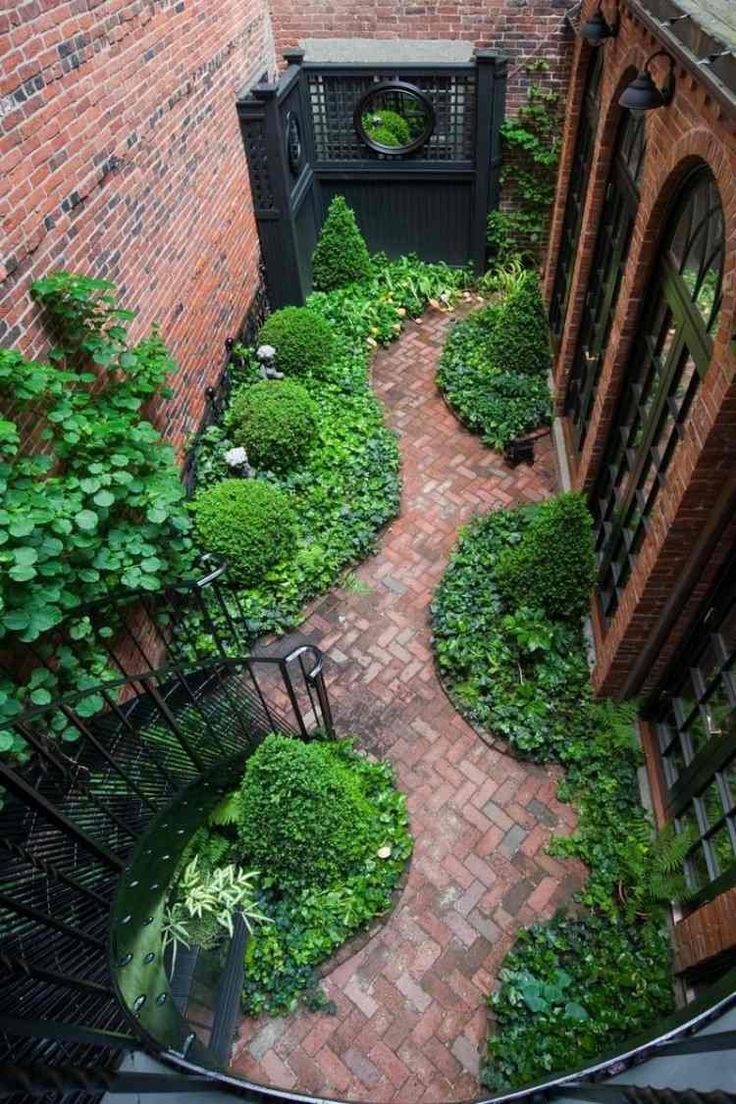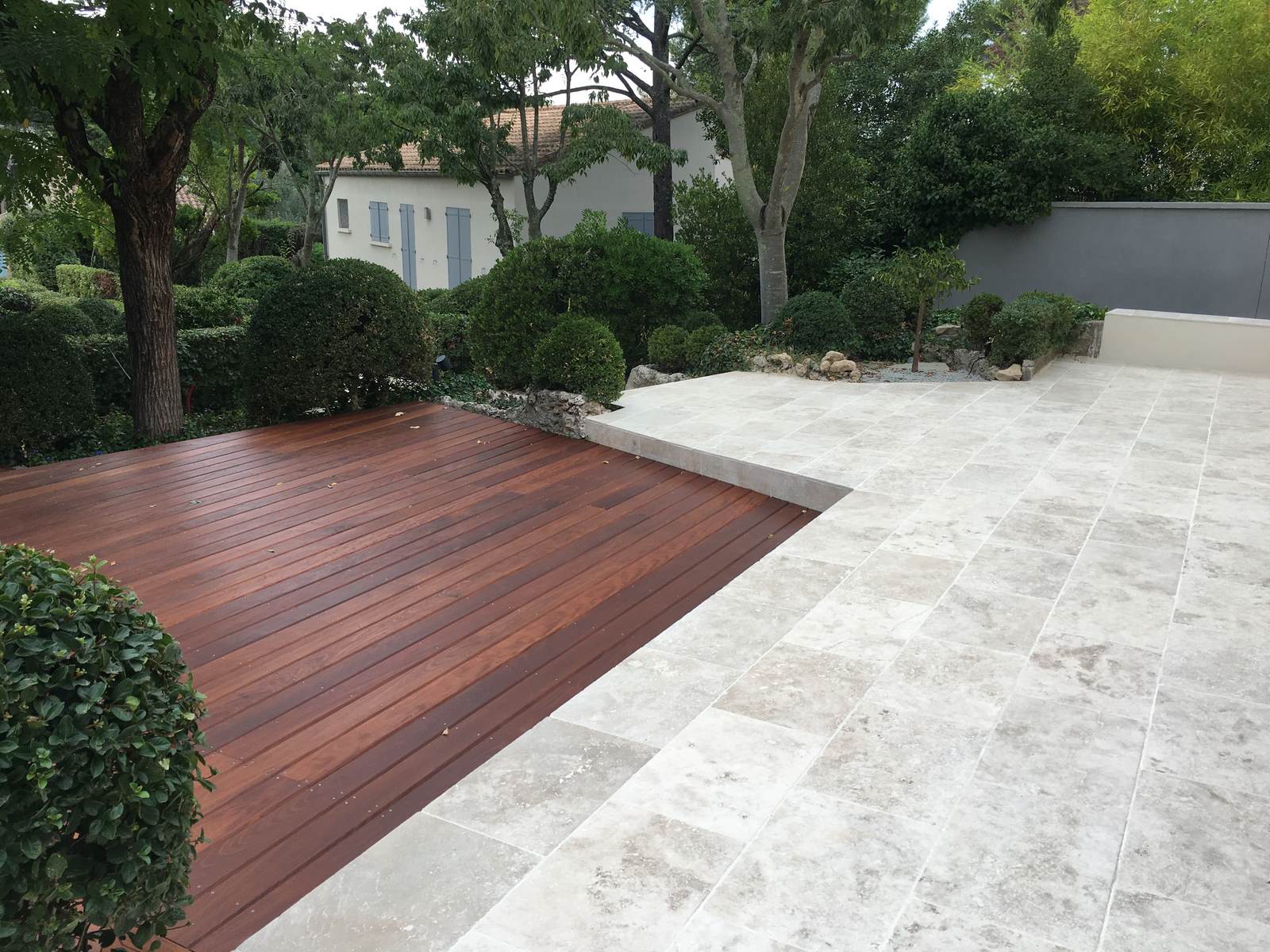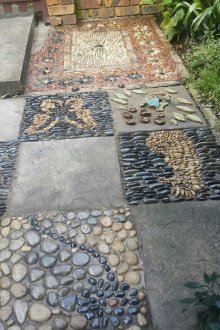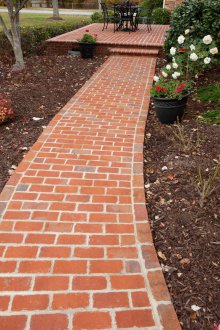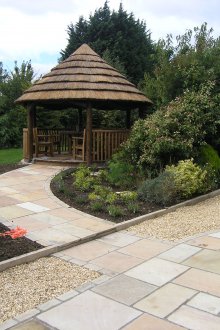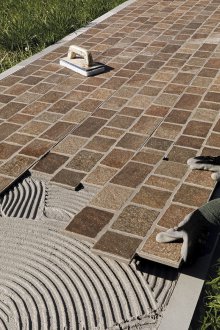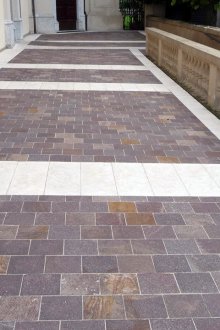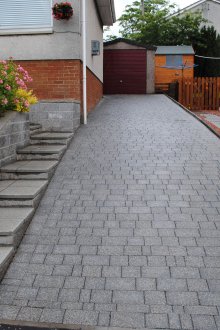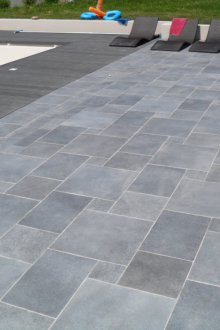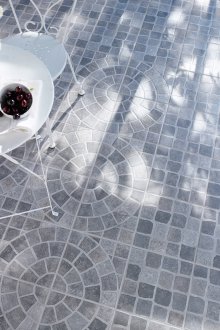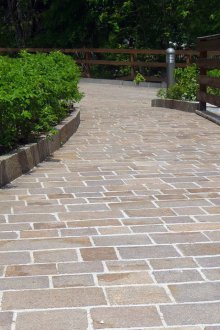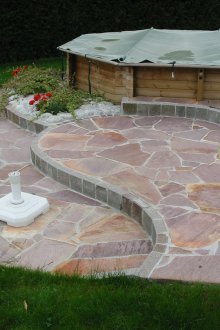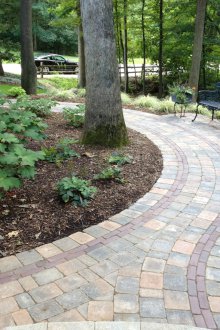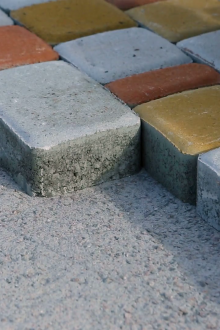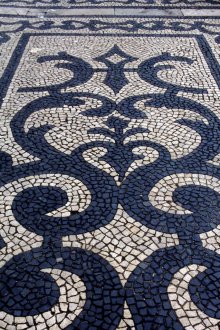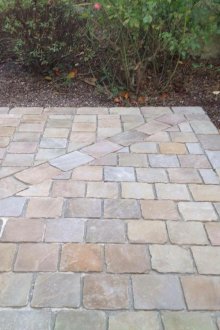Paving slabs for a summer residence: how to make the right choice (24 photos)
Content
Free movement around the site will be the key not only to full work, but also to a comfortable rest in the country, so convenient and safe paths should be equipped in the first place. The best option for their design is paving slabs for paths in the country.
Types of blocks
The classification of materials can be carried out according to the manufacturing method: vibrocasting, vibropress:
- vibrocast - cement mortar is used as a base, in which plasticizing additives are added. Special vibroforms are filled with a mixture from which water is gradually removed. The contents of the container are tamped, and then removed and dried (approximately 12 hours). Advantages of the method: it is possible to produce blocks of various shapes and various decorative surfaces. The disadvantages of the method: products have low frost resistance, low strength, high price;
- vibropressed - the same mixture is used for manufacturing, and the production method is different. The contents of the container are exposed to high pressure. Thanks to this technology, the blocks gain strength and density. Advantages of the method: tiles better tolerate temperature changes, mechanical stress. The disadvantages include a modest selection of shapes (mostly rectangles).
You can also distinguish two types of paving slabs that differ in the materials of manufacture: granite (a natural product) and plastic (artificial base).
For the manufacture of granite tiles (popularly called pavers), the plates are sawn and then chopped. Granite is a natural stone, which is characterized by high parameters of frost resistance and mechanical stability. The pluses of the tile are also a nice appearance, a long and reliable service life (about 25 years), and the minuses are the complexity of processing blocks and the high price (due to the expensive raw materials). When laying such a path, it is important to fix all the bars at the same level and try to keep the distance between the tiles to a minimum. The track will be flat if the product measuring 100x100x50 mm has an accuracy of +/- 10 mm.
Plastic paving slabs for summer cottage begins to slowly displace natural materials. The surface of the blocks successfully imitates natural textures, although the quality of the products is clearly inferior to samples made from natural materials. However, the advantages of plastic tiles cannot be denied: low price, excellent appearance, ease of installation.
How to choose paving slabs for a summer residence?
In order not to miscalculate with the acquisition, when choosing blocks, it is advisable to take into account several criteria.
- Climatic conditions. In regions that are characterized by regular and severe frosts and high humidity, it is advisable to lay vibration or granite tiles. This is due to the fact that such products better tolerate sudden changes in weather.
- Load. To create well-groomed and intricate country paths, it is better to give preference to vibrocast blocks. Since the offer of such products is very wide. But it is recommended to lay out the access road or the parking lot with vibropressed blocks - the surface will be more durable and wear-resistant.
- Cost. It is advisable to use vibropressed tiles to design summer cottages.This material has a low price and a good indicator of wear resistance. Most often, suburban areas are “inhabited” only in the warm season, therefore, when choosing a material, you must be guided primarily by practicality and the monetary component.
For the design of paths, paving slabs for cottages with a thickness of about 3 cm are suitable. Each summer resident has his own ideas about beauty and practicality. Some people prefer blocks with a smooth multi-colored surface, and some lay tracks of modest shade bars with a rough front side.
How to make a choice? When buying materials, one must keep in mind that the tile gets bright shades thanks to dyes. Cheap color additives adversely affect quality - the blocks are loose, lose strength.
A product acquires a smooth surface due to more water in the base. As a result, the quality of the tile decreases, and in rainy / frosty weather it becomes dangerously slippery.
Splitting one block, you can visually assess the quality of the tiles. Having examined the type of fault, you need to make sure that the products are made of a homogeneous mass that does not contain clots or pores.
Laying paving slabs in the country
A neat track of any materials gives the site a well-groomed appearance. If you correctly complete all the stages of laying paving slabs at the cottage with your own hands, then the surface will retain a beautiful appearance for a long time.
Before starting work, you need to accurately measure the coverage area. Material is bought with a margin (for trimming and in case of battle) at about 20% with a linear layout and 30% with a diagonal.
To lay paving slabs, you will need materials: sand, gravel, cement (M400, M500), geotextiles.
As tools come in handy: rope / cord, pegs, rubber mallet, construction level, grinder, shovel, trowel, tape measure, tamper (manual).
Technology of laying paving slabs: stages of work
- Marked the boundaries of the track along its entire length. The width of the path is selected individually. It is recommended to lay a walking path with a width of at least 50 cm, and a utility path (to drive cars) - about 70 cm. It is important at this stage to provide a direction for water flow.
- The soil layer is removed (to a depth of about 7 to 40 cm). The thickness of the soil to be removed is determined by: shrinkage and the type of earth, the height of the track above the site, the thickness of the pillow. Be sure to remove the roots of the plants and the soil is treated with a herbicide. The earth is carefully compacted.
- A layer of rubble falls asleep and gently leveled. It is necessary that the crushed stone lay evenly. Geotextiles are laid on top (to prevent weed growth and sand percolation).
- A layer of sand falls asleep, which is leveled (you can use a rake) and well compacted (it is better to wet the sand beforehand).
- A laying mixture is being prepared: sand and cement are combined in a ratio of 1: 5. Sand is recommended to be slightly moistened. The composition is poured onto the previous layer and slowly leveled. The surface is compacted. To make it even, they use the construction level.
- Lay paving slabs. Until the final completion of work, the track must not be stepped on. Throughout the process, you must follow the pattern (if it is assumed). Each tile is slightly tapped with a rubber mallet - this way a certain level is controlled.
- If there are hatches or any obstacles on the track line, they are neatly wrapped around. The final design of the contour of the hatch is made from the remains of the tile at the end of the work.
- After covering the entire intended area, the gaps between the blocks are filled with the prepared mixture (sand and cement). To do this, they pour it on the path and sweep it with a broom.
- At the edges of the track set borders that are fixed on the outside (they are poured with cement).
The flat surface of the path is checked by means of a building level.Higher tiles are lowered with a rubber mallet, and sunken blocks are carefully removed, sand is added to the holes and the tiles are put back into place, carefully tamped.
In areas of increased load (near the gate, at the benches), it is desirable to lay the blocks on cement mortar - this will give the masonry special strength.
It is with the arrangement of country paths that the creation of a stylish and unique landscape design on the site begins. Walking along the well-groomed paths, you can calmly and leisurely enjoy the natural beauty of flowers and plants.
Manufacturers of building materials offer enough varieties for arranging paths in summer cottages (clinker and rubber paving slabs). To simplify the choice, you can consult with professionals who can correctly assess the soil of the site, its slope and area.
